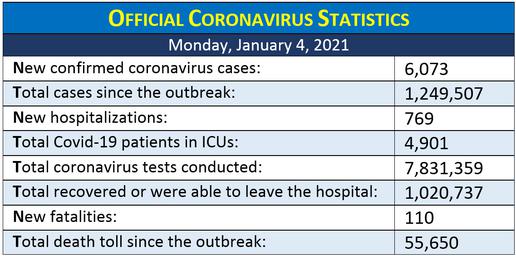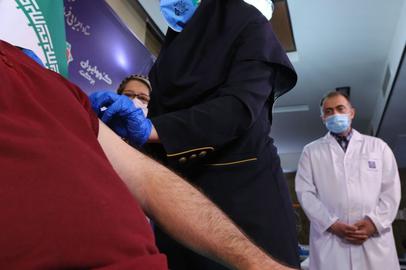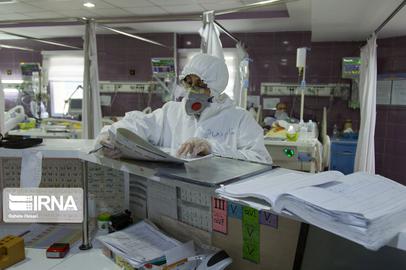Air pollution in at least 10 Iranian cities remains at an what health ministry officials have described as an “unhealthy” level. Despite this, the government has opposed a lockdown of Tehran, according to Abbas Shahsavani, head of the health ministry’s Air Safety and Climate Change Workgroup. “Based on studies done around the world, when we have air pollution the number of people going to hospitals increases after two weeks,” he said. Referring specifically to studies conducted in the three metropolitan areas of Tehran, Mashhad and Tabriz, Shahsavani added that “an increase of air pollution between six and 15 percent can increase the number coronavirus infections and fatalities.”
For several days, the situation in Mazandaran province has been deteriorating. Some cities in the province have reverted to a red state of alert. The coronavirus taskforce believes the increase in Covid-19 infections is partly due to the fact that it is orange and kiwi harvesting season. As a result, smaller towns and villages have witnessed greater numbers of infections.
Some media reports say the new, more contagious variant of coronavirus may have reached the Iranian Kurdistan.
A “Russian Vaccine” for €1,000
Meanwhile, it emerged that a “Russian vaccine” is being offered on the black market for 1,000 euros.
The newspaper Donya-e Eghtesad reported that the vaccine can be bought from vendors in Tehran’s Nasser Khosrow Avenue, where many drug wholesalers are located. “There is a vaccine in the black market but it is not clear whether it is genuine or fake,” the report said. “Druggists on Nasser Khosrow say in 10 days they are going to import the Chinese vaccine as well.”
The report points out that Iran has 8,574 kilometers of common borders with seven countries, making it easy to bring in drugs from other countries. “Today the coronavirus vaccine is perhaps one of the most valuable commodities in the world and, as of now, vaccines from Russia, China, Britain, Germany and US have received permission for export to various countries,” it reads. "In the United Arab Emirates and Turkey the Chines vaccine and in Saudi Arabia and Qatar the American and the German vaccines have already been distributed among high-risk groups.”
The Red Crescent Society of Iran is to import one million doses of the Chinese vaccine in coming weeks and it has been announced that American philanthropists have donated 150,000 doses of the Pfizer vaccine to Iran.
Four More Volunteers Given the Iranian Vaccine
The first three volunteers who had been injected with the Iranian coronavirus vaccine Barekat CovIran have been deemed to be healthy and, therefore, four more volunteers were vaccinated on January 4, reported Hojatollah Niki Maleki, head of public relations for the Executive Headquarters of Imam's Directive, a foundation that has been overseeing the development of the vaccine produced by Shifa Pharmed, part of a state-owned pharmaceutical conglomerate known as Barekat.
For the human trial of this vaccine 56 volunteers have been selected from among many people who came forward.
Provinces Round-up
Unlike other Iranian provinces, the situation in Mazandaran has been deteriorating over the last week and four cities in the province are now in a red state of alert, with four other cities“on the verge” of becoming red. The coronavirus taskforce announced that one of the reasons behind the increase in infection in Mazandaran is that now is the season for harvesting oranges and kiwifruits and infections have risen more in smaller towns and villages.
According to the latest figures from Mazandaran and Babol universities of medical sciences, currently 1,220 patients with Covid-19 symptoms are hospitalized in treatment centers supervised by these two universities. In the last 24 hours 242 people with suspected coronavirus were in hospitals associated with Babol University of Medical Sciences, reported Dr. Abbas Mousavi, president of the university.
Dr. Arezoo Fallahi, spokeswoman for Kurdistan University of Medical Sciences, confirmed reports that a highly contagious variant of coronavirus that had first appeared in England might have reached Iranian Kurdistan. The patient is a doctor from the provincial capital of Sanandaj who had traveled to England the previous week and is currently hospitalized at Sanandaj’s Tohid Hospital. She added, however, that tests conducted on the patient were not conclusive and samples had been sent to Tehran for further analysis.
“A virus that is transmitted through breathing is not one that can be kept out by closing the borders and then somehow it gets in from somewhere,” said Alireza Raeesi, a deputy health minister and the spokesman for the National Coronavirus Taskforce. “The only thing we can do is socially distance and avoid crowds, especially now that the mutant virus has been found in Turkey, Oman and, recently, in Pakistan. Therefore, we must completely comply with health protocols.”
As of January 4, 142 Covid-19 patients were hospitalized in Kurdistan, 36 of them in ICUs, reported Dr. Farzin Rezaei, president of Kurdistan University of Medical Sciences. In the 24-hour spanning January 3 and January 4, 72 coronavirus patients were hospitalized in the province and one further patient died, bringing the official death toll in Kurdistan to 1,038.
In the last 24 hours, 47 further people with Covid-19 symptoms were hospitalized in Alborz and as of January 4, 348 people with suspected or confirmed cases were hospitalized in the province, reported Dr. Mohammad Fathi, president of Alborz University of Medical Sciences. With the death of another four people with Covid-19 in the last 24 hours, the death toll in Alborz had reached 2,597 by January 4.
In Qazvin, 44 new Covid-19 patients were identified in the last 24 hours, of whom 35 were hospitalized, bringing the total number of hospitalizations in the province to 222, reported Qazvin University of Medical Sciences. As of January 4, 17 coronavirus patients in the province are using ventilators to breathe. In the same 24 hours four more Covid-19 patients died and the death toll in the province since the coronavirus outbreak now stands at 1,229.
Iran’s Latest Coronavirus Statistics
In her daily briefing for January 4, the health ministry spokeswoman Dr. Sima Sadat Lari announced the official coronavirus statistics for the last 24 hours:

Dr. Lari reported that currently four Iranian cities are on red alert, 43 cities are in an orange state of alert and 401 are yellow.
This is part of IranWire's coronavirus chronology. Read the full chronology
visit the accountability section
In this section of Iran Wire, you can contact the officials and launch your campaign for various problems



























comments